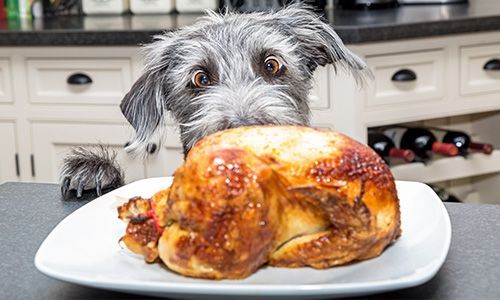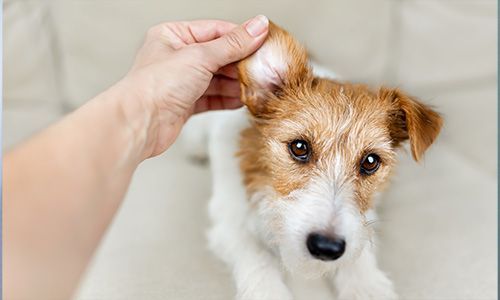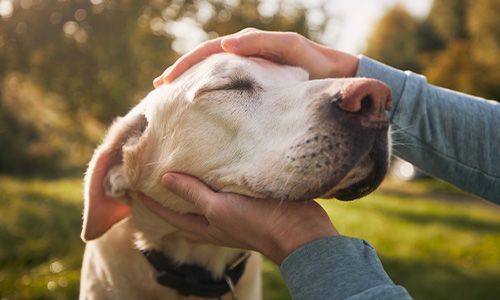Pet Boarding vs Pet Sitting: Which is Right for Your Pet
Headed on a trip? Need someone to watch your pets? Find out if pet boarding or pet sitting is the best option for you and your family.

When you're traveling and can't bring your pet along, finding the right care becomes essential. You need to carefully weigh your options, like pet boarding or pet sitting, to ensure your furry friend is in reliable hands while you're away.
Both services offer unique benefits. But they also come with their own set of challenges.
Understanding the differences between pet boarding and pet sitting is crucial. It can help you make an informed decision that best suits your pet's needs.
This article aims to shed light on the pros and cons of each service. We'll delve into key considerations such as safety, comfort, and the qualifications of the attending staff.
By the end, you'll have a clearer picture of what you need to know when considering pet sitting vs. boarding. And hopefully, you'll be better equipped to decide between pet boarding and pet sitting.
So, let's dive in and explore the world of pet care options.
Understanding Pet Boarding and Pet Sitting Services
Pet boarding refers to leaving your pet at a professional facility when you're away. These facilities provide a structured environment with regular routines, meals, and social interactions.
On the other hand, pet sitting involves a sitter coming to your home. This service allows your pet to stay in its familiar environment, which can be comforting.
Both options aim to ensure your pet's safety and well-being. However, the choice often depends on your pet’s personality and specific needs.
It's important to consider your pet's behavior and health requirements. Some pets thrive in the social settings of boarding, while others prefer the calm of staying home. Understanding these differences will guide you in selecting the best option for your furry friend.
Pros of Pet Boarding
Pet boarding facilities offer around-the-clock supervision. This ensures that your pet is monitored day and night, giving you peace of mind.
Boarding also provides socialization opportunities. Pets interact with other animals, which is beneficial for their social development.
Additionally, many boarding services include activities and enrichment programs. These help keep your pet engaged and active.
Another advantage is access to professional care. Staff members are often trained in pet health and first aid, including CPR certification.
Moreover, pet boarding facilities typically have health protocols. These include health checks and vaccination requirements, ensuring a safe environment for all pets.
Cons of Pet Boarding
However, pet boarding is not without its drawbacks. The new environment can be stressful for some pets. They may experience anxiety being away from home.
Another concern is the potential exposure to illnesses. Despite strict health protocols, being in a communal setting raises health risks.
Limited personalized attention can be another downside. With multiple pets to care for, staff may not always provide individualized attention.
Cost is also a factor to consider. Pet boarding can be expensive, especially during peak travel seasons.
Lastly, adjusting to the facility's schedule might not suit every pet. Some may struggle with the routine changes, affecting their comfort and well-being.
Pros of Pet Sitting
Pet sitting offers the comfort of staying in a familiar environment. Your pet remains at home, which can reduce stress and anxiety.
This service provides personalized attention. Sitters can tailor their care to your pet's specific needs and routine.
Another perk is the convenience factor. You don't need to worry about transportation or adjusting your schedule.
Pet sitters often provide additional services, like watering plants or bringing in the mail. This can be a bonus for busy pet owners.
Moreover, with a sitter, there is less exposure to other animals. This reduces the risk of your pet contracting illnesses from other pets.
Cons of Pet Sitting
Pet sitting might not offer 24/7 supervision. If your sitter doesn't stay overnight, your pet could be left alone for long periods.
Additionally, trusting a stranger in your home is a concern for many. Ensuring the sitter is reputable and reliable is crucial.
Pet sitting can also be pricey, especially for extended periods. The costs can add up, depending on the services needed.
Another potential downside is the sitter’s availability. High demand during holidays can make booking difficult.
Lastly, there's a lack of structured activities. Pets might miss the social and enrichment opportunities provided by a boarding facility.
Key Considerations for Your Pet's Needs
When deciding between pet boarding and pet sitting, consider your pet’s unique needs and personality traits. This can help you make the best choice for their care and comfort.
Evaluate the level of attention your pet requires. Some pets benefit from constant supervision while others do well with periodic check-ins. Here are a few considerations:
- Need for socialization with other animals
- Behavioral issues or anxiety levels
- Special medical requirements or medication
- Adaptability to routine changes
- Preference for familiar surroundings
Each of these factors can influence whether your pet might thrive in a boarding facility or is better suited to staying at home with a sitter. Understanding these needs ensures you select the right environment for their well-being.
Special Care and Attention
Pets with health conditions require special care. In boarding, trained staff handle medication administration and health monitoring. This is crucial for pets needing consistent medical attention.
For pets needing personalized care, a pet sitter can offer focused attention and tailor routines to meet their unique needs. This setup provides continuity for pets with strict dietary or health regimens.
Additionally, a sitter at home can address behavioral nuances. This can include unique needs stemming from stress or anxiety issues. Careful attention to these aspects helps ensure your pet’s comfort and happiness.
Safety and Health Concerns
Safety is paramount when choosing pet care. In boarding, facilities have security measures like fenced areas and controlled environments. These help ensure pet safety day and night.
Health protocols in boarding reduce illness risks, but the communal setup can still expose pets to health concerns. Sitters, on the other hand, limit exposure, keeping pets at home away from other animals.
Whether choosing a sitter or boarding, verify emergency protocols. Providers should have plans for sudden health issues, ensuring prompt medical attention if needed. Your pet's safety and health always come first.
Routine and Environment
Pets thrive on routine, benefiting from familiar schedules and environments. Boarding facilities establish structured routines, which can be beneficial for some pets. However, not all pets adapt easily to these changes.
Home-based routines with a pet sitter might be best for pets who prefer consistency. At home, pets remain in their familiar environment, easing stress and anxiety.
Consider your pet’s ability to adapt to new environments and changes in routine. A careful assessment will guide you towards the best choice, ensuring they remain comfortable and happy.
Making the Right Choice for Your Pet
Choosing between pet boarding and pet sitting depends on various factors. Consider your pet's personality, health needs, and daily habits. These aspects will guide you in making an informed decision.
Think about your pet's comfort with social interaction. Social pets might enjoy the company found in boarding. Alternatively, more reserved pets might prefer the tranquility of staying at home.
Financial considerations also play a role. Compare costs and services offered by both options. Balancing budget with your pet's well-being will lead to the best choice.
Evaluating Pet Boarding Facilities
When selecting a pet boarding facility, visit potential locations. Observe the environment's cleanliness and the staff's interactions with the animals. These observations provide insight into the care level provided.
Inquire about the staff's training and qualifications, particularly their ability to handle emergencies. Having experienced professionals is crucial for your pet's safety and health.
Check for boarding amenities that cater to your pet's needs, such as temperature-controlled rooms or play areas. These features can enhance your pet's stay by providing a home-like atmosphere.
Finding the Right Pet Sitter
Finding a suitable pet sitter begins with seeking recommendations. Trusted sources, such as friends or family, can provide reliable options. Personal experiences often help gauge a sitter's reliability.
Schedule a meeting between your pet and potential sitters. This interaction allows you to assess compatibility and observe how they handle your pet's specific needs.
Ensure that the sitter understands your pet's routine, dietary needs, and behavioral quirks. Clear communication helps create a smooth transition and maintains consistency in your pet's care.
Conclusion: Trust and Peace of Mind
Deciding between pet boarding and pet sitting requires careful consideration. Evaluate your pet's unique needs and comfort levels. Trust your instincts when choosing a service.
Peace of mind is invaluable for pet owners. Opt for a provider that reassures you about the care and safety of your pet. Ensuring your pet's happiness will make your time apart less stressful.
Ultimately, the right choice fosters a positive experience for your pet. Prioritize their well-being and see their delight upon your return. Your thoughtful decision will enhance the bond you share with your beloved pet.











